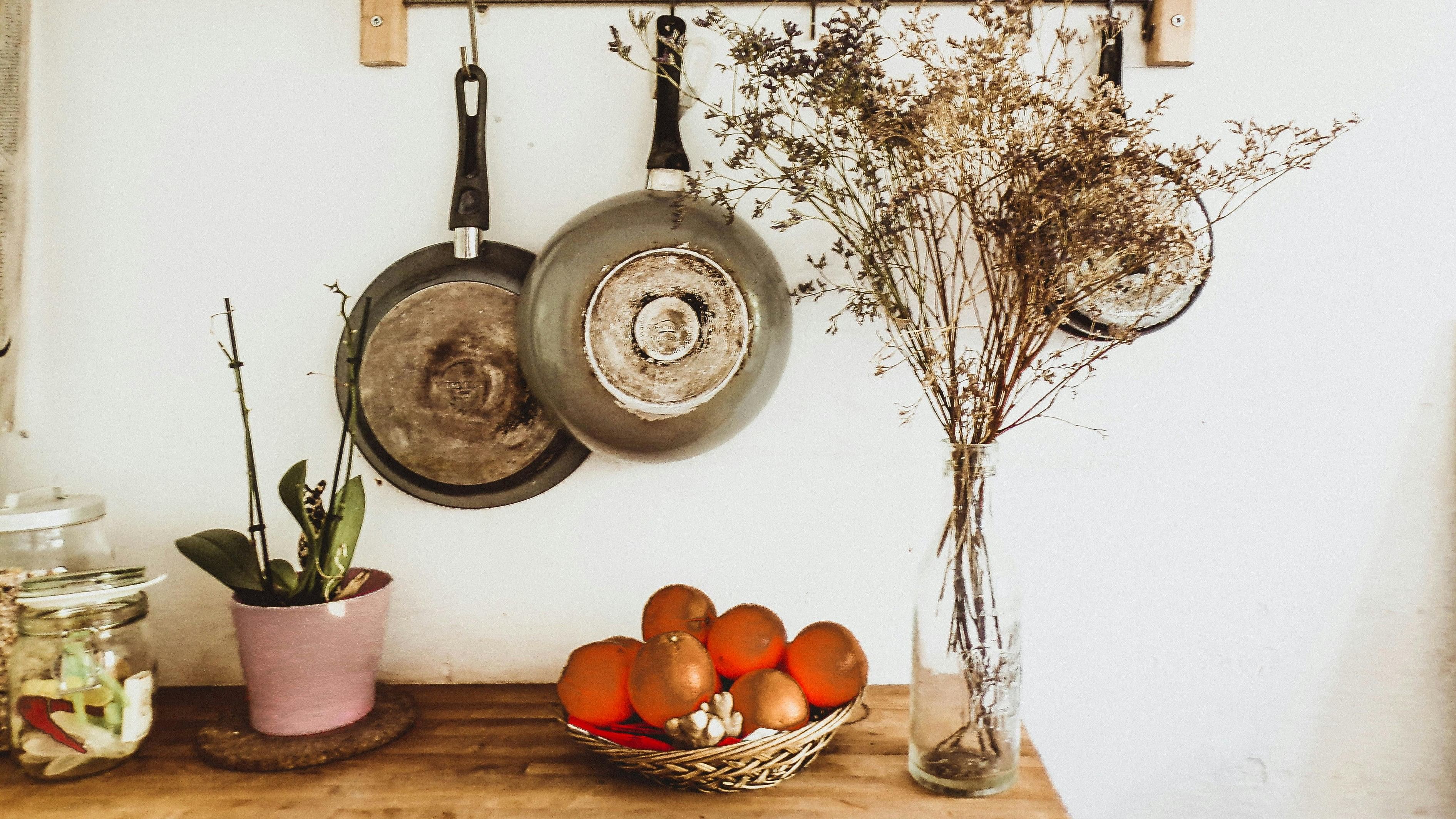
When it’s so much easier and more convenient in India to switch to earthen, steel, brass or even stone storage and cookware options, why pick those that come with a warning?
Credit: Pexels
There’s a strain of a street vendor’s call that often rings in my ears — a blast from the past — which perhaps some of you will relate to: steel paatre saamaan! This was at a time when the words recycle or reduce didn’t exist in our dictionaries, let alone social media feeds, but our parents were quite cool. This call of the Kalhaiwala was a common weekend occurrence in the neighbourhood, as he went door to door, sifting through mounds and piles of silks and sarees, trying to price-match them in a barter system all of his own, for new kitchen utensils.
While this exchange, in a way, had set the tone for sustainable practices in everyday households, especially the concept that many of us are embracing these days — making space for something new by letting go of something that doesn’t serve us — it makes me wonder about the lifespan and lifecycle of a used kitchen utensil. I don’t have all the answers, but I can safely say that my mother had ingenious ways to revive or repurpose every other object she owned around the kitchen. In her Martha Stewart-esque manner, she’d go about soaking old jam bottles in hot water and soda to remove the labels and reuse them as spice containers, turning empty ketchup bottles into oil decanters, fashioning vases out of dented copper jugs and pots, and finding some use or the other for plastic dabbas (storing rangoli powders) and glass bowls that had given way at the rim (holders for steel wool scrub pads).
One of the best upcycled projects that she undertook was to turn old tin dabbas that were once bearers of cooking oils, into trays for the papad season (she would make different varieties of fryums, locally known as happala-sandige, in the summers) as well as for baking over a makeshift sand-bed oven (she baked butter biscuits for our after school snack on these).
After enlisting the help of the community ironsmith, she had him cut up and open the tin dabbas and then beat them down into trays with raised edges, fastened at the corners with nails.
Of course, some of the red flags didn’t exist to the extent that we see today: food-grade plastics, PFOA, PFOS, and PTFE-coated cookware. The Indian Council of Medical Research has recently issued a warning that overheating in chipped and scratched Teflon-coated non-stick pans could lead to the emission of poisonous fumes. Despite bans in effect around the world, there are many schools of thought here in India that actually condone and promote the usage of both these items. At the core of this argument in favour of these is a myopic attitude towards long-term ill effects: it’s not going to kill you to get hot food delivered or served in plastic boxes once in a while, or to use a non-stick pan only for your omelettes and dosas every now and then.
The hazards of microplastics being released into the food in either case, could have disastrous long-term effects on hormonal and endocrinal health, according to several clinical studies.
Besides, when it’s so much easier and more convenient in India to switch to earthen, steel, brass or even stone storage and cookware options, why pick those that come with a warning?
It’s comparatively easier to recycle plastics, but what can you do with your used cookware and utensils?
Here’s a handy guide for sustainability in the kitchen:
♦ The easiest way to deal with old kitchen utensils is to recycle them through your community waste collection services or hand them over to a scrap metal facility.
♦ You may have spotted similar initiatives by leading brands too, which is a great starting point to ask insightful questions and learn about the ethicality of such drives.
♦ There are many local artists and craftspersons who can transform a used utensil or pan that has run its course into home decor that you can display on a shelf or wall in the kitchen or dining area.
♦ Or, with a little help from video tutorials, you could pick up some paints and a brush and learn a new skill while giving a new lease of life to a prized old object.
♦ With some patience, you could also see if a cast iron pot or pan could be revived from a spell of rusting. A gentle scrub with a bit of mud from your garden, a quick wipe with a cotton cloth and a hot oil rub using the base of a cut onion could do the trick more often than not.
If you’ve inherited well-cared-for kadhais and tavas from your mother’s kitchen, and see that they have dents now, it simply means that heat distribution will turn out to be uneven so why not give them a new lease of life?
The dents could be the result of some mishandling or repeated shocking of hot cookware in cold water immediately after use.
You could use broken, chipped, blackened, warped utensils as pots or pot holders in your balcony or garden!
Just give them a good wash and coating of paint, and they’ll be good to go.
(Ranjini is a communications professor, author, and podcaster, straddling many other worlds, in Bengaluru. She’s passionate about urban farming and sustainable living, and can mostly be found cooking and baking in her little kitchen, where, surrounded by heirloom coffee kettles and mismatched tea cups, she finds her chi.)